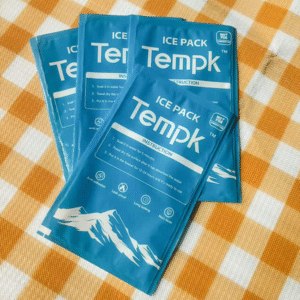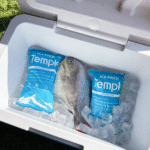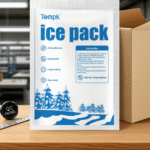Dry Ice Pack Delivery: How to Ensure Safe and Efficient Shipping?
Shipping temperature-sensitive goods requires a reliable cooling solution, and dry ice packs are a top choice. These packs ensure your products stay frozen during transit, preserving their quality and integrity. Whether you’re shipping perishable food, medical supplies, or pharmaceuticals, understanding the proper use of dry ice is crucial for efficient and safe delivery. This guide will walk you through everything you need to know to ensure your dry ice shipping process is seamless and compliant with industry standards.
-
What are dry ice packs and how do they work?
-
How do you choose the right dry ice pack for your shipment?
-
What safety measures should you follow when shipping with dry ice?
-
How can you ensure dry ice effectiveness during delivery?
What Are Dry Ice Packs and How Do They Work?
Dry ice packs are solidified carbon dioxide (CO₂) that sublimates at a temperature of -78.5°C (-109.3°F). Unlike regular ice, dry ice doesn’t melt into liquid but transforms directly into gas, making it ideal for shipping temperature-sensitive goods without creating water damage. This property makes dry ice particularly useful for perishable items, pharmaceuticals, biological samples, and food products that need to stay frozen or chilled during transit.
Dry ice packs are also favored for their ability to maintain temperatures without leaking liquid, providing a dry, mess-free solution for your shipments. Whether you are transporting vaccines or frozen seafood, using the right dry ice pack ensures that your goods remain in their optimal condition.
Characteristics of Dry Ice
| Characteristic | Description | What it Means for You |
|---|---|---|
| Temperature | Sublimates at -78.5°C | Keeps items frozen during transit |
| Sublimation Rate | 5-10 lbs every 24 hours | Helps you determine when to replace packs |
| Regulations | Subject to DOT & IATA rules | Ensures compliance and avoids legal issues |
How Do You Select the Right Dry Ice Pack for Shipping?
Choosing the right dry ice pack is essential for maintaining the correct temperature throughout the shipping process. Consider the following factors:
1. Product Type and Temperature Sensitivity
Some items, such as vaccines, require extended freezing periods, while others, like food products, may need only short-term cooling. Understanding your product’s specific temperature needs will help you select the appropriate dry ice pack.
2. Shipping Duration
For longer shipments, you may need larger or multiple dry ice packs. For example, a short 24-hour shipment may only require a small amount, while longer shipments may need 10-20 lbs of dry ice to maintain the necessary temperatures.
3. Size of the Shipping Container
Ensure the dry ice fits within the container without jeopardizing the integrity of the product. Too much dry ice can cause unnecessary pressure buildup, while too little may not effectively maintain the cold chain.
Best Practices for Ensuring Dry Ice Effectiveness During Delivery
Use Insulated Packaging
To maximize the longevity of dry ice, always package your goods in insulated containers. This helps slow down the sublimation process and ensures the dry ice lasts for the entire shipping period.
Monitor Temperature with Sensors
Many shipping services offer temperature sensors, which can help track the effectiveness of dry ice during transit. These sensors alert you if the temperature falls outside the acceptable range, ensuring that the shipment stays within the required temperature window.
Choose the Right Size
Bigger isn’t always better. The size of the dry ice pack should match the shipment’s duration and the temperature sensitivity of the goods. Avoid over-packing, as this could lead to excessive sublimation and unnecessary waste.
Case Study:
A pharmaceutical company recently upgraded their shipping practices by using dry ice packs for global deliveries. As a result, they reduced product spoilage by 40%, ensuring that vital medical supplies arrived in perfect condition.
How to Safely Handle and Store Dry Ice
Handling dry ice requires precautions due to its extremely low temperatures and potential health hazards.
Key Safety Measures for Using Dry Ice:
-
Proper Ventilation: Always store dry ice in well-ventilated areas to prevent the buildup of CO₂ gas, which can displace oxygen in confined spaces and cause suffocation.
-
Protective Gear: Always wear insulated gloves and goggles when handling dry ice to avoid frostbite and eye injuries.
-
Disposal: Allow dry ice to sublimate in an open outdoor area. Never dispose of it in small or enclosed spaces.
| Safety Guideline | Action | Why It’s Important |
|---|---|---|
| Ventilation | Store in areas with good airflow | Prevent CO₂ buildup and suffocation |
| Protective Gear | Use gloves and goggles | Avoid frostbite and injuries |
| Disposal | Let it sublimate in open air | Prevent hazardous buildup in closed spaces |
2025 Trends and Developments in Dry Ice Shipping
The world of dry ice shipping is rapidly evolving, with new trends and technologies improving efficiency, safety, and sustainability.
Emerging Trends in Dry Ice Shipping:
-
Smart Monitoring Systems: Real-time temperature tracking systems are becoming more prevalent, alerting users if the shipment’s temperature falls outside the acceptable range.
-
Blockchain for Cold Chain: The use of blockchain ensures greater transparency and traceability in dry ice shipping, particularly for high-value pharmaceutical shipments.
-
Eco-Friendly Insulation: Companies are developing more sustainable packaging materials that reduce the amount of dry ice required, contributing to both cost savings and environmental benefits.
Market Insights: Cold Chain Logistics in 2025
With the global demand for cold chain logistics rising, the market for dry ice solutions is expected to grow significantly. By 2025, the market is projected to reach $500 billion, driven by increasing demand for fresh food, biologics, and other temperature-sensitive products.
Frequently Asked Questions
Q1: How long will dry ice last during shipping?
Dry ice typically lasts between 24 and 48 hours, depending on the size and insulation. Larger packs last longer, while smaller ones are better for shorter shipping times.
Q2: Can I ship dry ice internationally?
Yes, dry ice can be shipped internationally, but it must comply with specific regulations such as IATA guidelines for air transport and DOT regulations for ground shipping.
Q3: How do I calculate how much dry ice I need?
Calculate the amount of dry ice based on the shipment size, duration, and insulation type. A general guideline is 5-10 lbs of dry ice per 24 hours of shipping.
Conclusion and Recommendations
Dry ice packs are indispensable for shipping perishable goods and ensuring product quality during transit. By following best practices, selecting the right pack, and adhering to safety regulations, you can confidently ship temperature-sensitive products without worrying about spoilage.
Next Steps:
-
Assess Your Shipping Needs: Determine your product’s temperature requirements and shipping duration.
-
Educate Your Team: Ensure your team is trained in the safe handling of dry ice.
-
Monitor Technological Advancements: Stay updated on new technologies to improve efficiency and reduce waste.
About Tempk
At Tempk, we provide high-quality dry ice solutions designed to meet the needs of various industries. With years of experience in cold chain logistics, our dry ice packs ensure your goods remain safe and cold, no matter the distance. Let us help you streamline your shipping process!
For more information on our dry ice shipping solutions, contact us today!
























